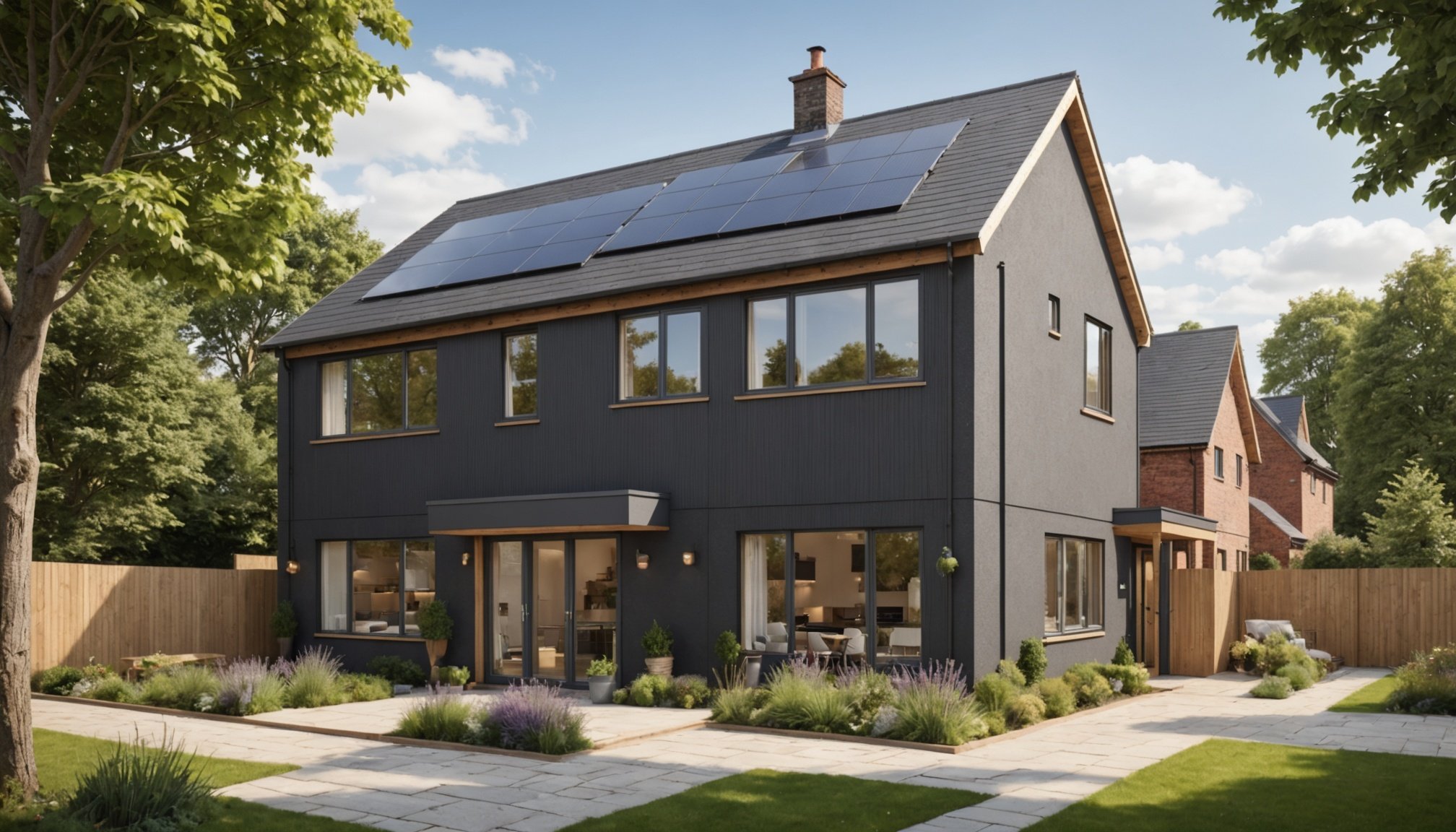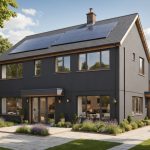Overview of Eco-Friendly Housing Innovations for 2024
As eco-friendly housing continues to gain traction, the significance of sustainable living cannot be overstated. By 2024, numerous trends in home innovations aim to enhance not only livability but also ecological impact. A greater emphasis on reducing carbon footprints and utilizing energy efficiency measures is at the forefront of these developments.
The importance of sustainability in home design lies in its potential to conserve resources and decrease environmental damage. Modern designs prioritize materials and building practices that harmonize with natural environments, contribute to higher energy efficiency, and minimize waste.
Also to read : Transform Your Living Space for Ultimate Comfort: Benefits and Long-term Impacts
Statistics indicate that green homes consume 25% less energy compared to traditional housing. This environmental shift significantly lowers utility costs, showcasing the dual benefits of sustainability—environmental conservation and cost savings.
Moreover, eco-friendly housing incorporates advanced technology to monitor and optimize energy usage, further preserving resources. The widespread interest in these practices illustrates a growing public commitment to sustainable living, spurred by escalating environmental concerns.
This might interest you : Transform Your Living Space for Ultimate Comfort: Benefits and Long-term Impacts
With proactive efforts, 2024 is poised to be a pivotal year for sustainable and intelligent housing innovations, paving the way for more resilient and environmentally friendly living spaces.
Key Innovations in Eco-Friendly Housing
In the realm of eco-friendly housing, housing technology is advancing rapidly, with smart home technology playing a crucial role. These systems optimize energy management, allowing residents to track their energy consumption in real time. Features like automated lighting and thermostats adjust to occupant needs, reducing energy waste. This integration ensures a seamless balance between convenience and sustainability for the modern homeowner.
When considering green materials, the use of recycled and sustainable building materials is prominent. These materials, including bamboo and reclaimed wood, reduce environmental impact and provide durability. Builders now prioritize materials that enhance insulation and energy conservation, aligning with sustainable principles.
Renewable energy implementation is significant in redefining energy sources. Solar panels and small-scale wind turbines power homes efficiently, slashing reliance on fossil fuels. Innovations such as perovskite solar cells promise higher efficiency at reduced costs, making renewable energy more accessible. Homeowners benefit not only from reduced energy bills but also contribute to a lower carbon footprint. The synergy of these innovations highlights a future where eco-friendly housing is synonymous with cutting-edge technology and responsible living.
Case Studies of Successful Eco-Friendly Homes
In the pursuit of sustainable development, the UK has showcased several success stories in green housing. One prominent example is the BedZED project in London, renowned for its pioneering approach to eco-friendly living. BedZED not only uses sustainable materials but also incorporates renewable energy systems, such as solar panels and efficient heat recovery ventilation. This development emphasises community engagement, fostering a shared commitment to recycled resources and lower energy consumption.
Analyzing the impact of such projects reveals fascinating insights. Residents benefit from substantial cost savings due to reduced utility bills, alongside enhanced air quality. The social fabric is strengthened as residents partake in eco-friendly practices collectively, thus encouraging wider community participation.
Key takeaways from these initiatives illustrate that sustainable housing does not sacrifice comfort or style for eco-friendliness. Instead, it marries modern design principles with sustainable practices, creating vibrant living environments. Projects like these underline the importance of cross-collaboration among architects, developers, and communities to harness innovative solutions effectively. Such developments inspire others to embrace eco-friendly housing as a feasible path towards sustainable living.
Expert Opinions on Future Trends
In the evolving landscape of eco-friendly housing, industry leaders offer valuable insights on upcoming trends. Experts forecast a future where sustainable living is pivotal, with architects emphasising innovations in design that integrate seamlessly with natural environments. This not only enhances home aesthetics but also promotes durability and energy efficiency.
With regulatory changes on the horizon, environmentalists predict stricter energy standards, encouraging more widespread adoption of home innovations. These regulations are anticipated to drive advancements in green materials and encourage the use of cutting-edge housing technology. Such policies may alter the housing market, benefitting both developers and homeowners through potential incentives.
As for financing eco-friendly housing projects, industry specialists suggest a growing availability of green mortgages and loans. These financing options aim to alleviate upfront costs and make sustainable homes more accessible. A continued focus on sustainable development will likely spur community-led projects, fostering a collective effort towards environmental preservation.
By considering these expert opinions, stakeholders in the housing market can better prepare for an eco-friendly future and stimulate sustainable living practices.
Benefits of Eco-Friendly Housing for Homeowners
Embracing eco-friendly housing offers substantial rewards for homeowners. One of the primary homeowner advantages is cost savings. Green homes typically result in lower energy bills, as they utilize energy-efficient appliances and better insulation. Over time, this leads to significant financial savings.
Another crucial benefit is the improvement in living conditions. Eco-friendly homes often boast better air quality, which enhances personal well-being and reduces health problems. This benefit arises from the use of non-toxic, sustainable materials that minimize indoor pollutants.
The environmental impact of choosing eco-friendly housing is considerable. By enhancing energy efficiency and reducing reliance on non-renewable resources, homeowners contribute to overall environmental sustainability. This translates into a smaller carbon footprint and a healthier planet for future generations.
Such benefits underscore why more individuals are opting for sustainable living. As people increasingly recognize these advantages, the demand for home innovations that bolster eco-friendly housing is expected to continue rising, fostering a broader societal shift towards sustainability.
Challenges and Considerations in Eco-Friendly Housing
Despite the rise of eco-friendly housing, significant challenges hinder widespread adoption. A primary barrier is the perception that sustainable living is costly. However, with advances in home innovations, long-term savings often offset initial expenses—a fact that warrants greater public awareness.
Builders and developers face construction challenges associated with integrating green materials and technologies into traditional building practices. This includes sourcing sustainable materials and ensuring that new methods comply with existing housing regulations. These challenges call for a shift in industry perspectives to embrace housing technology that promotes both energy efficiency and resource conservation.
Consumer awareness is crucial for overcoming these barriers. Educating potential homeowners about the financial and environmental benefits of eco-friendly housing is vital. Clear communication about the positive impact on energy efficiency and resource conservation could dispel misconceptions and foster greater demand.
Ultimately, addressing these challenges requires collaboration across industry sectors to innovate and drive the shift towards sustainable living. Enhanced educational efforts, technological advancements, and policy support are key to transforming perceptions and making sustainable homes a standard choice for future generations.
The Future of Eco-Friendly Housing in the UK
In the quest for sustainable living, the UK housing market anticipates pivotal changes in housing regulations. These forthcoming standards aim to enhance energy efficiency, urging a shift towards eco-friendly housing. As government incentives emerge, they play a crucial role in encouraging the adoption of green housing technologies and practices among developers and homeowners alike.
Prominent among these incentives are financial benefits like tax breaks and subsidies for energy-efficient home upgrades. Such measures contribute significantly to offsetting initial costs associated with home innovations that integrate sustainable living principles. Moreover, these incentives stimulate the market by making sustainability more accessible to a broader audience.
The vision for the next decade encompasses sustainable communities that blend responsible living with cutting-edge architecture. These communities promise lower carbon footprints through smart technologies and innovative building materials. Importantly, they champion resource conservation and promote a resilient future.
Through embracing these trends and government incentives, the UK’s eco-friendly housing sector is poised to lead the world in pioneering approaches to sustainability and resource conservation.





